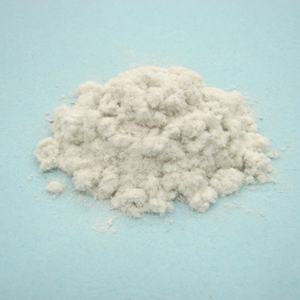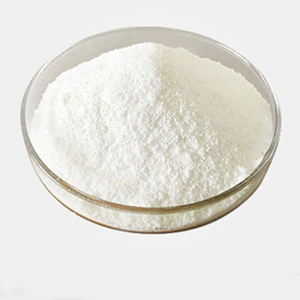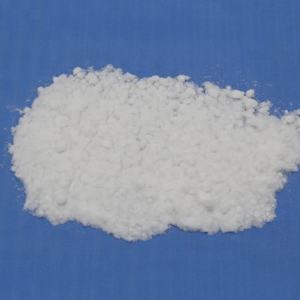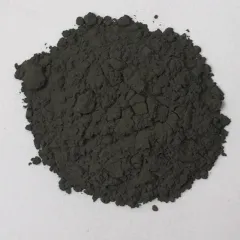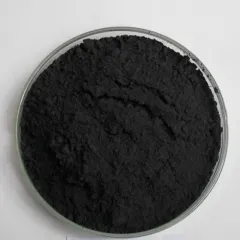1. Chemical Structure and Molecular System
1.1 Synthesis and Molecular Style
(Naphthalene Sulfonate Superplasticizer)
Naphthalene sulfonate formaldehyde condensate (NSF), typically referred to as naphthalene sulfonate superplasticizer, is an artificial water-reducing admixture widely used in high-performance concrete to enhance flowability without compromising structural stability.
It is created with a multi-step chemical process involving the sulfonation of naphthalene with concentrated sulfuric acid to develop naphthalene sulfonic acid, followed by formaldehyde condensation under controlled temperature level and pH problems to develop a polymer with repeating fragrant units connected by methylene bridges.
The resulting molecule features a hydrophobic naphthalene backbone and several hydrophilic sulfonate (-SO SIX ⁻) groups, developing a comb-like polyelectrolyte structure that makes it possible for strong communication with concrete bits in aqueous environments.
This amphiphilic architecture is central to its spreading function, permitting the polymer to adsorb onto the surface of concrete hydrates and give electrostatic repulsion in between bits.
The degree of sulfonation and polymerization can be changed throughout synthesis to customize the molecular weight and charge density, directly affecting diffusion efficiency and compatibility with various cement types.
1.2 Diffusion Device in Cementitious Systems
When contributed to fresh concrete, NSF functions primarily through electrostatic repulsion, a device distinct from steric limitation used by more recent polycarboxylate-based superplasticizers.
Upon mixing, the hydrophobic naphthalene rings adsorb onto the favorably charged sites of tricalcium silicate (C TWO S) and other cement stages, while the adversely charged sulfonate teams expand right into the pore service, creating a solid adverse surface possibility.
This creates an electrical dual layer around each concrete particle, causing them to push back one another and combating the all-natural propensity of great bits to flocculate due to van der Waals pressures.
As a result, the entrapped water within flocs is launched, increasing the fluidity of the mix and enabling substantial reductions in water material– usually 15– 25%– while preserving workability.
This enhanced dispersion results in a much more uniform microstructure, lowered porosity, and improved mechanical stamina advancement gradually.
Nevertheless, the performance of NSF reduces with long term blending or heats because of desorption and downturn loss, a limitation that influences its application in long-haul transport or hot environments.
( Naphthalene Sulfonate Superplasticizer)
2. Performance Characteristics and Engineering Benefits
2.1 Workability and Circulation Enhancement
One of the most prompt advantages of naphthalene sulfonate superplasticizer is its capability to considerably boost the slump of concrete, making it extremely flowable and very easy to place, pump, and settle, specifically in largely strengthened structures.
This improved workability allows for the building of complicated building forms and lowers the requirement for mechanical resonance, decreasing labor expenses and the danger of honeycombing or spaces.
NSF is especially efficient in generating self-consolidating concrete (SCC) when made use of in combination with viscosity-modifying representatives and various other admixtures, ensuring complete mold and mildew filling up without partition.
The level of fluidness gain relies on dosage, normally varying from 0.5% to 2.0% by weight of cement, beyond which diminishing returns or even retardation might occur.
Unlike some organic plasticizers, NSF does not introduce excessive air entrainment, preserving the thickness and longevity of the final product.
2.2 Toughness and Longevity Improvements
By enabling reduced water-to-cement (w/c) ratios, NSF plays a critical duty in improving both very early and lasting compressive and flexural stamina of concrete.
A reduced w/c proportion lowers capillary porosity, bring about a denser, less absorptive matrix that withstands the ingress of chlorides, sulfates, and wetness– crucial factors in preventing support deterioration and sulfate attack.
This enhanced impermeability extends life span in aggressive settings such as marine frameworks, bridges, and wastewater treatment facilities.
Furthermore, the uniform dispersion of cement particles promotes more full hydration, accelerating toughness gain and minimizing shrinking cracking risks.
Studies have actually revealed that concrete including NSF can accomplish 20– 40% higher compressive strength at 28 days contrasted to regulate mixes, depending upon mix layout and treating conditions.
3. Compatibility and Application Considerations
3.1 Interaction with Cement and Supplementary Products
The efficiency of naphthalene sulfonate superplasticizer can vary considerably depending upon the composition of the concrete, especially the C TWO A (tricalcium aluminate) web content and antacid levels.
Cements with high C THREE A tend to adsorb even more NSF as a result of stronger electrostatic communications, possibly requiring greater dosages to attain the desired fluidness.
Likewise, the presence of supplementary cementitious products (SCMs) such as fly ash, slag, or silica fume influences adsorption kinetics and rheological actions; for example, fly ash can complete for adsorption websites, modifying the effective dosage.
Blending NSF with various other admixtures like retarders, accelerators, or air-entraining agents needs cautious compatibility screening to avoid adverse communications such as rapid slump loss or flash collection.
Batching series– whether NSF is added previously, throughout, or after blending– also affects diffusion performance and must be standardized in large procedures.
3.2 Environmental and Handling Factors
NSF is readily available in fluid and powder kinds, with fluid solutions offering less complicated dosing and faster dissolution in mixing water.
While generally steady under typical storage problems, extended exposure to freezing temperatures can create precipitation, and high warm might break down the polymer chains in time.
From an ecological perspective, NSF is considered reduced toxicity and non-corrosive, though correct handling techniques must be complied with to avoid breathing of powder or skin irritability.
Its manufacturing includes petrochemical by-products and formaldehyde, elevating sustainability issues that have driven study right into bio-based choices and greener synthesis paths.
4. Industrial Applications and Future Outlook
4.1 Use in Precast, Ready-Mix, and High-Strength Concrete
Naphthalene sulfonate superplasticizer is thoroughly used in precast concrete manufacturing, where specific control over setting time, surface finish, and dimensional precision is important.
In ready-mixed concrete, it allows long-distance transport without giving up workability upon arrival at building sites.
It is likewise a vital part in high-strength concrete (HSC) and ultra-high-performance concrete (UHPC), where incredibly low w/c ratios are required to accomplish compressive staminas going beyond 100 MPa.
Passage cellular linings, high-rise buildings, and prestressed concrete aspects benefit from the improved resilience and architectural performance provided by NSF-modified blends.
4.2 Trends and Challenges in Admixture Technology
Regardless of the appearance of more advanced polycarboxylate ether (PCE) superplasticizers with superior downturn retention and lower dose needs, NSF continues to be widely used due to its cost-effectiveness and tried and tested efficiency.
Ongoing research focuses on crossbreed systems incorporating NSF with PCEs or nanomaterials to optimize rheology and strength advancement.
Efforts to boost biodegradability, lower formaldehyde emissions throughout manufacturing, and enhance compatibility with low-carbon concretes mirror the market’s change towards sustainable construction materials.
In conclusion, naphthalene sulfonate superplasticizer stands for a keystone technology in modern concrete design, linking the gap between conventional methods and advanced product performance.
Its capacity to change concrete right into a very convenient yet durable composite continues to support international facilities growth, also as next-generation admixtures advance.
5. Distributor
Cabr-Concrete is a supplier of Concrete Admixture with over 12 years of experience in nano-building energy conservation and nanotechnology development. It accepts payment via Credit Card, T/T, West Union and Paypal. TRUNNANO will ship the goods to customers overseas through FedEx, DHL, by air, or by sea. If you are looking for high quality Concrete Admixture, please feel free to contact us and send an inquiry.
Tags: sodium naphthalene,polycarboxylate ether, Naphthalene Sulfonate Superplasticizer
All articles and pictures are from the Internet. If there are any copyright issues, please contact us in time to delete.
Inquiry us
